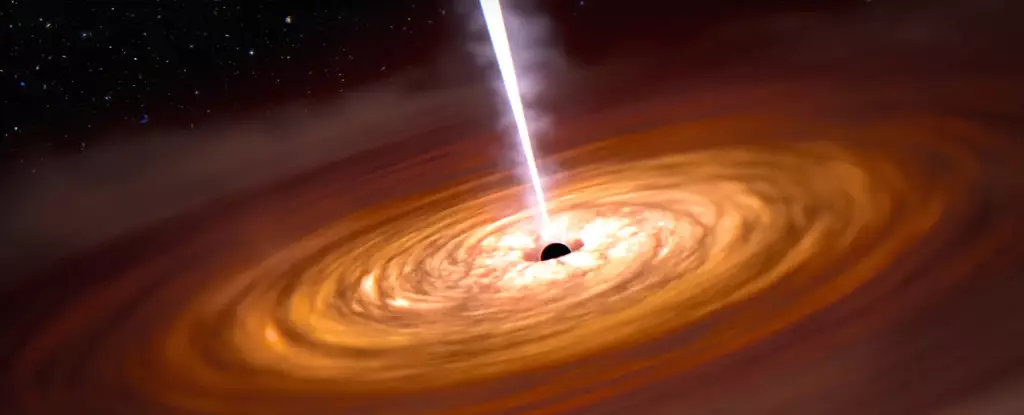Cosmic rays, those mysterious high-energy particles that bombard our planet from space, have long intrigued scientists. Their origins and astonishing speeds have remained a mystery for years. However, recent research has shed light on this enigma, thanks to a small black hole acting as a particle accelerator. In this new era of discovery, scientists can now explore the intricate workings of cosmic rays and find answers to elusive questions.
Earth is constantly submerged in a sea of cosmic rays that traverse the Universe. These highly energetic charged particles carry immense amounts of energy. Without the protective shield of our planet’s atmosphere, life as we know it would be impossible. Cosmic rays travel at almost the speed of light, easily passing through our bodies and causing severe damage to our DNA. Therefore, it is crucial for scientists to understand the behavior and origins of these timeless visitors, especially as we embark on ventures to become a multi-planetary species.
When scientists observe cosmic rays originating from quasars or supernovae, they typically encounter an ambiguous mass of particles. Quasars, which exist far away in space, are too distant to observe in great detail, while nearby supernovae emit low-energy rays that are difficult to discern from Earth. Nevertheless, a unique cosmic object named SS 433 has provided scientists with an unprecedented opportunity to investigate cosmic rays more closely.
Located in the Manatee nebula approximately 18,000 light-years away, SS 433 is a microquasar – a small black hole ten times the mass of the Sun. Unlike standard quasars, microquasars emit higher-energy particles, making them an ideal subject for study. Olivera-Nieto, a researcher from the Max-Planck-Institut für Kernphysik in Heidelberg, refers to it as a “miniature version” of these cosmic powerhouses. What sets SS 433 apart from others is its unusual longevity, producing jets for 50 years rather than the typical one to two days.
Upon examining SS 433, Olivera-Nieto and her colleagues discovered an intriguing gap in the emitted jets. Spirals surrounding the black hole were visible at a distance of 0.1 parsecs before disappearing, only to reappear 75 light-years further on. Scientists hypothesize that this gap is where particles are accelerated to near-light speeds. Three potential explanations for this natural particle accelerator have been put forward by the scientific community.
One theory suggests that magnetic field lines encircling the black hole carry the particles, building tension until a violent snap occurs, catapulting them into space. However, this scenario would place the accelerator in close proximity to the black hole.
Another hypothesis posits that the black hole possesses tunnels that enhance particle speed as they rebound off the sides. Logically, this would imply that particle velocity would gradually increase.
For the first time, observational evidence supports a third theory. According to this hypothesis, particles encounter an invisible wall or discontinuity, suddenly halting their progress. The change in speed allows energy to accumulate around the particles, providing them with the necessary velocity to breakthrough. The question that remains is: what generates this shock? Olivera-Nieto is intrigued by the symmetrical nature of this phenomenon, recognizing the potential connection to the cosmic system itself.
Through the investigation of a small black hole acting as a particle accelerator, researchers have begun unraveling the mysteries of cosmic rays. What was once an enigma now offers a glimpse into the intricate workings of the Universe. With each new discovery, humanity edges closer to understanding the cosmic forces that shape our existence. As we prepare to venture beyond our planet, comprehending the secrets of cosmic rays becomes increasingly important. The journey to become a multi-planetary species is intertwined with unlocking the cosmic puzzle, and every piece we uncover brings us one step closer to realizing that dream.


Leave a Reply